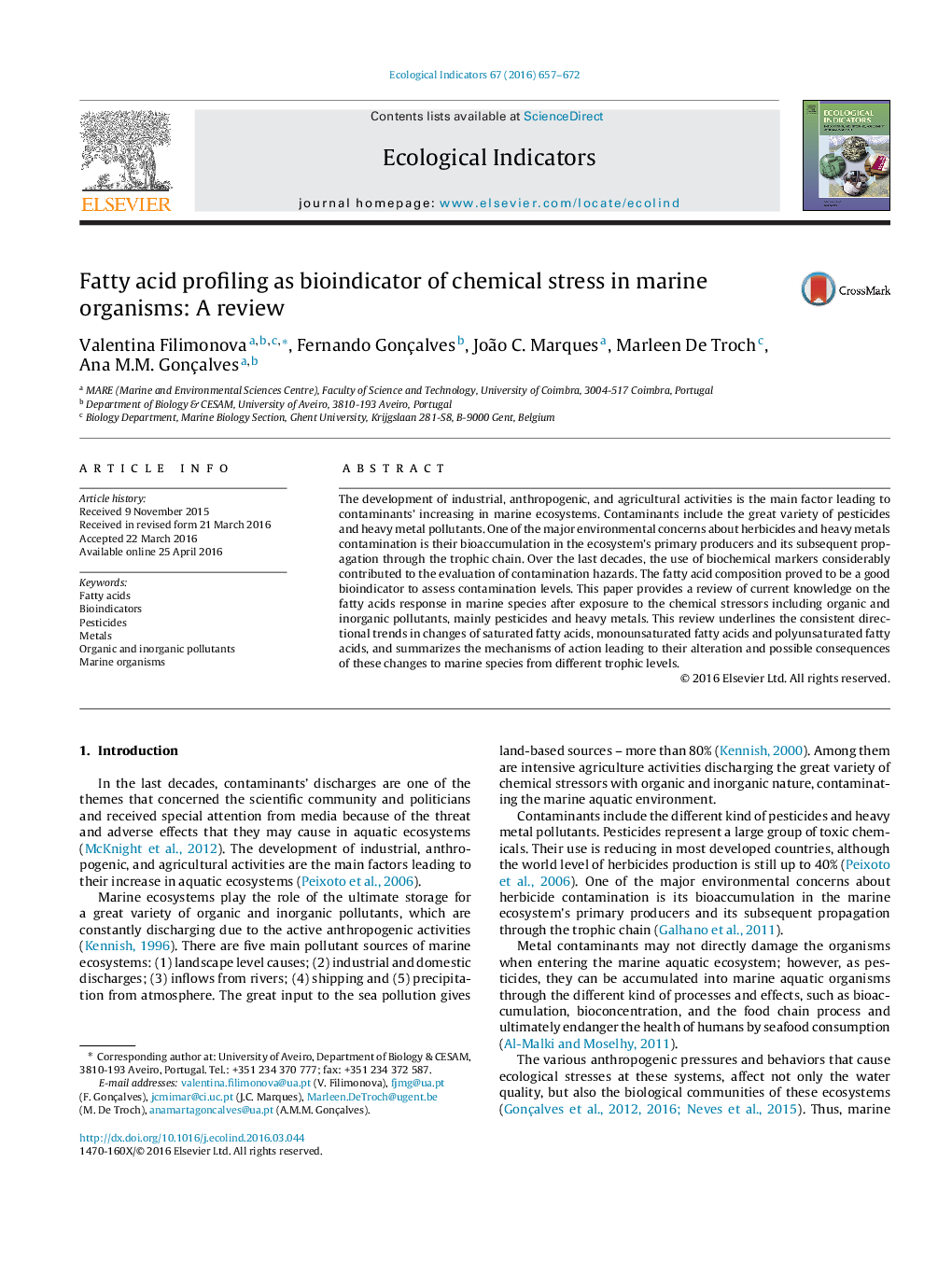| Article ID | Journal | Published Year | Pages | File Type |
|---|---|---|---|---|
| 4372911 | Ecological Indicators | 2016 | 16 Pages |
The development of industrial, anthropogenic, and agricultural activities is the main factor leading to contaminants’ increasing in marine ecosystems. Contaminants include the great variety of pesticides and heavy metal pollutants. One of the major environmental concerns about herbicides and heavy metals contamination is their bioaccumulation in the ecosystem's primary producers and its subsequent propagation through the trophic chain. Over the last decades, the use of biochemical markers considerably contributed to the evaluation of contamination hazards. The fatty acid composition proved to be a good bioindicator to assess contamination levels. This paper provides a review of current knowledge on the fatty acids response in marine species after exposure to the chemical stressors including organic and inorganic pollutants, mainly pesticides and heavy metals. This review underlines the consistent directional trends in changes of saturated fatty acids, monounsaturated fatty acids and polyunsaturated fatty acids, and summarizes the mechanisms of action leading to their alteration and possible consequences of these changes to marine species from different trophic levels.
